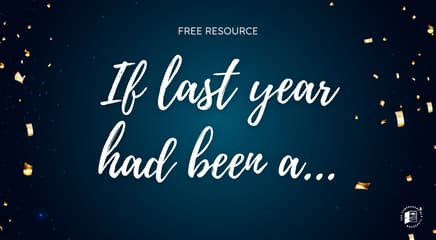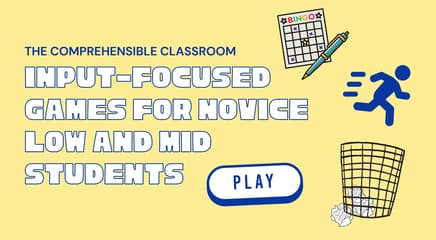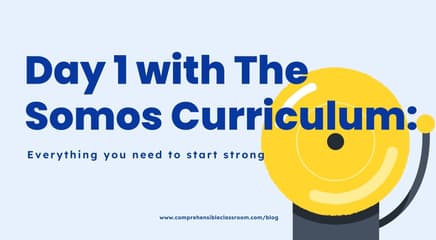It's May. If you're lucky, you are wrapping up your last week or two of school. If you're on the East Coast, you are staring down another month and a half of classes. Either way--the sun is shining, the birds are chirping, and you.are.done.
Here are ten activities that you can use to carry through these last few weeks: they are no-prep and technology-free ('cause if your school is like mine was, all computers were confiscated for summer cleaning during the last few weeks of the year).
WRITE, DRAW, PASS
Write, Draw, Pass is one of the most versatile activities that I use, which is why I write about it all the time. Click on the image to download instructions and the forms that I use!
If you are feeling reaalllllly exhausted and really want to fill some time, you could have students spend more time on their illustrations and do them in color. At this point in the year, even students in Spanish 1 can probably come up with a mostly accurate starter sentence, but having them pull it from a text is never a bad idea. Alternatively, you could give them pre-written sentences like this set that are all about summer vacation plans, found in our subscriber library!
JIGSAW PUZZLE
Ah, the impossible puzzle--impossibly delightful for a teacher at the end of the year that needs to sit and grade/pack up the classroom/feign being awake. Create your own using Tarsia or use one of the ones that I have in this bundle.
CHAIN REACTION
There are a lot of different ways that students can do a Chain Reaction activity, but since it's the end of the year and we are looking for low-energy options, stick with this plan:
- Students sequence the questions and answers on their desks.
- Students write out the story sans questions.
- Students illustrate the story.
I put together two quick Chain Reaction activities (although the cards aren't scrambled on the print-out--so you will have to cut them apart for your students before class). I used one of the Giveaway games that the SOMOS Curriculum Collaboration played as a basis for the story, and I modified it slightly from the first page to the second so that it would be more simple.
LISTENING
Humans, in general, enjoy listening to stories. We enjoy being read to! You can read aloud to your students (my favorite Spanish read aloud is Spanish Cuentos' El Silbón de Venezuela!) or you can play the audio of someone else reading aloud to your students.
The Spanish Experiment is a fantastic listening resource for this purpose (and it is available in other languages too). It was floating around in various forums earlier this year with some regularity, but perhaps you have forgotten about it! Now is a great time of year to use it.
For a nice, calming activity (maybe in the sun!), read or play the recording of a story to your students. While they listen, students can
- draw a mural
- doodle words that stand out to them
- write down questions in Spanish or English
- transcribe phrases or sentences
Each of those activities requires ZERO prep work from you and offer minimal opportunity for management issues to arise!
GRUDGEBALL OR THE UNFAIR GAME
It takes very little time to write up a set of questions for Grudgeball or for the Unfair Game, and students love them. Those are two reasons that these games are good for the last few weeks of school--the downside is that they definitely have a tendency to wind students up, and you probably don't have a ton of energy to help wind them back down. Use discretion when planning a day with one of these games!
STRIP BINGO
I like Strip BINGO for low energy days because students are [sitting quietly and] LISTENING to a passage. When the teacher calls out a series of words or sentences with pauses in-between, it invites chatter. And chatter invites more chatter, which invites hushing and shushing, which is frankly just exhausting this time of the year. So Strip BINGO is my preferred BINGO form in the late spring.
Oh, wait--you haven't heard of Strip BINGO? Well my word you need to go read about it here right now before you lose all respect for my judgment!
And if you need a reading to use with Strip BINGO, hop on over to Revista LITERAL and download the May 1 edition. There is an amazing story on the first page, written by a 16 year old named Andrew from Minnesota that was inspired by Robarte un beso!
Here is a word bank that I created for Andrew's story, and your students can fill out their strips with five words to play the game by looking at this word bank:

GUIDED DRAWING
Guided drawing is a favorite post-dinner activity at our house. We take turns being the guide, and it is a nice way to spend time together and wind down before bed. It's also fun to compare and compliment our similar-yet-different finished products!
To do a guided drawing activity, have everyone pull out a piece of paper and a writing utensil or a few different colored markers/crayons/colored pencils. Then, one person (probably you--unless you have a native speaker student that likes to draw!) begins to draw something while narrating what they are doing ("Draw a big circle in the middle of the page. Add a triangle. The triangle is the nose. Fill in the nose..."), and everyone else in the class mimics what they are doing.
Truly, you can draw anything--and your artwork doesn't have to be amazing. If you don't feel comfortable guiding students in their drawing, however, you could always play a YouTube video of someone else leading a guided drawing:
There are tons of options! I haven't found many that have clear instructions in Spanish (mostly it's just the person saying, "Like this, like this, like this"), so I would recommend muting the volume and describing what the artist is doing while they draw.
Students should be hearing some of the target language during this activity (otherwise it's just an art lesson). If you don't feel confident giving instructions in your target language and describing how to draw different kinds of shapes and lines, you could instead tell or create together a story about whatever you are drawing as you go. Ask students to predict what you are drawing. Ask them (or tell them) what the subject that you are drawing is doing, and add those details to the rest of the picture.
LYRIC DISCOVERY
Pull out one of your favorite songs from the year, or use this opportunity to bring out a new one. Make sure that the lyrics are appropriate for your students to read (even if they don't understand all of what they are reading!).
Use the song lyrics to do a text discovery (aka literature circles) activity with your students. Follow this process:
- Ask students an open-ended question related to the theme of the song and have them do a two-to-five minute speed write on the topic--in English or in the target language, your choice. Set these aside.
- Give students the complete lyrics to the song (or have them fill in a CLOZE version of the song first if you so desire!).
- Put students in groups of 5-10 and have them read the text aloud around the circle, with each person reading one line of the song.
- You (the teacher) read the complete lyrics aloud to all students. While the students listen, they should underline any word, phrase, or sentence that stands out to them.
- If students underlined more than two things, have them choose their two favorites and circle them.
- As a class in a big circle, have each student read aloud one of the two things that they circled aloud. Emphasize that they should not change the phrases that they selected if someone else reads it first; the repetition is important!
- Go around the circle a second time time, each student reading the second thing that they circled aloud. The result will be an oral poem of sorts!
- Now, have students to do a second focused free write--this time for sure in the target language. Have them choose one of the two phrases or words that they just chose and expand on it for two to five minutes. They should write anything that comes into their heads when they think about that phrase. The result is a stream of consciousness poem. (For lower levels, you might consider doing a 1-3-5 focused free write to build in some processing time, which will result in more interesting writing pieces.)
- Finally, do another read-around. You (the teacher) will read the song lyrics, but your students will interrupt you immediately after you speak the phrase that inspired their free write. If multiple students wrote from the same phrase, there will be a chain of tangents. After the interruption is over, continue reading until you are interrupted again or until you finish reading the lyrics.
- Collect the writing pieces!
THE MORALS TEST
I designed my Solar System unit specifically for the end of the year in Level 1, and there are quite a few components in it that make it a good fit for this time of the year: Grudgeball instead of storyasking, the Astronaut competition to get kids outside and moving on the track instead of being cooped up in the classroom, and lots of input-rich activities. One of them is the "Morals Test", or the "Story of the River". You can grab the Morals Test on its own here or you can use the complete Solar System unit here.
BE YOUR OWN SUB
All those emergency sub plans that you prepared at the beginning of the year and didn't use? Now is the time to make them work for you!! If you have already used them, I have scores of printable free and paid sub plans in my blog archives and even more in this Pinterest board!







